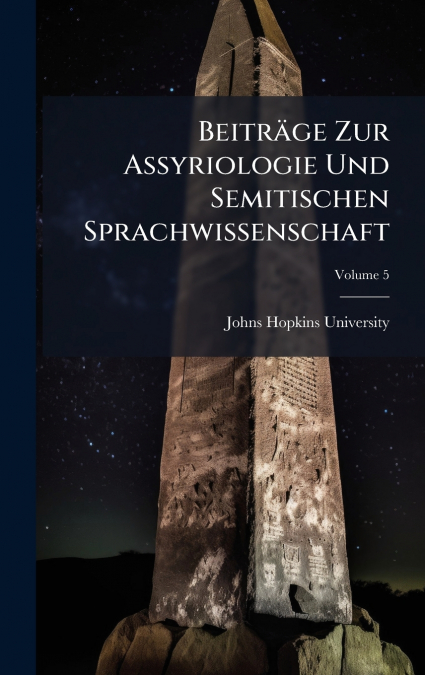
Johns Hopkins University
Beiträge Zur Assyriologie Und Semitischen Sprachwissenschaft, Volume 5 presents a collection of scholarly articles dedicated to the study of Assyriology and Semitic linguistics. Published in 1906 by Johns Hopkins University, this volume offers invaluable insights into the languages, cultures, and histories of ancient Mesopotamia and the Semitic-speaking world.This work contains detailed analyses of texts, inscriptions, and linguistic structures, making it an essential resource for researchers and scholars interested in understanding the complexities of ancient civilizations. The contributions within this volume reflect the state of knowledge at the time of publication and provide a historical perspective on the development of Assyriological and Semitic studies.Though originally published over a century ago, the contents of 'Beiträge Zur Assyriologie Und Semitischen Sprachwissenschaft' remain relevant for those seeking a deeper understanding of the ancient Near East and the evolution of language studies.This work has been selected by scholars as being culturally important, and is part of the knowledge base of civilization as we know it. This work was reproduced from the original artifact, and remains as true to the original work as possible. Therefore, you will see the original copyright references, library stamps (as most of these works have been housed in our most important libraries around the world), and other notations in the work.This work is in the public domain in the United States of America, and possibly other nations. Within the United States, you may freely copy and distribute this work, as no entity (individual or corporate) has a copyright on the body of the work.As a reproduction of a historical artifact, this work may contain missing or blurred pages, poor pictures, errant marks, etc. Scholars believe, and we concur, that this work is important enough to be preserved, reproduced, and made generally available to the public. We appreciate your support of the preservation process, and thank you for being an important part of keeping this knowledge alive and relevant.